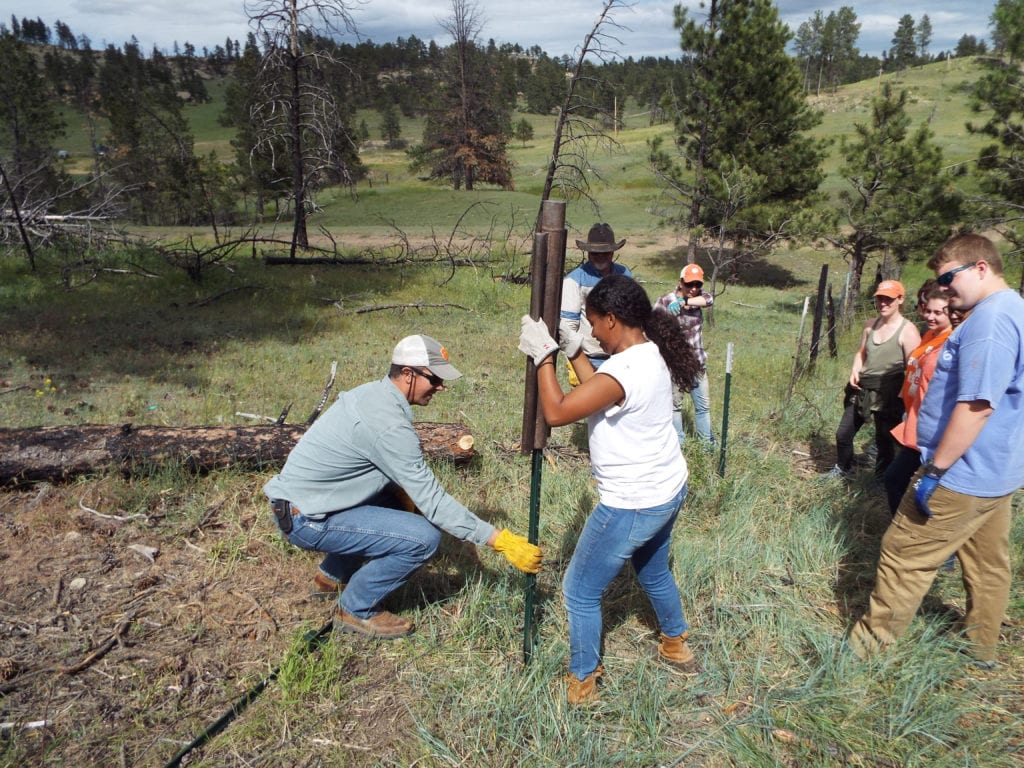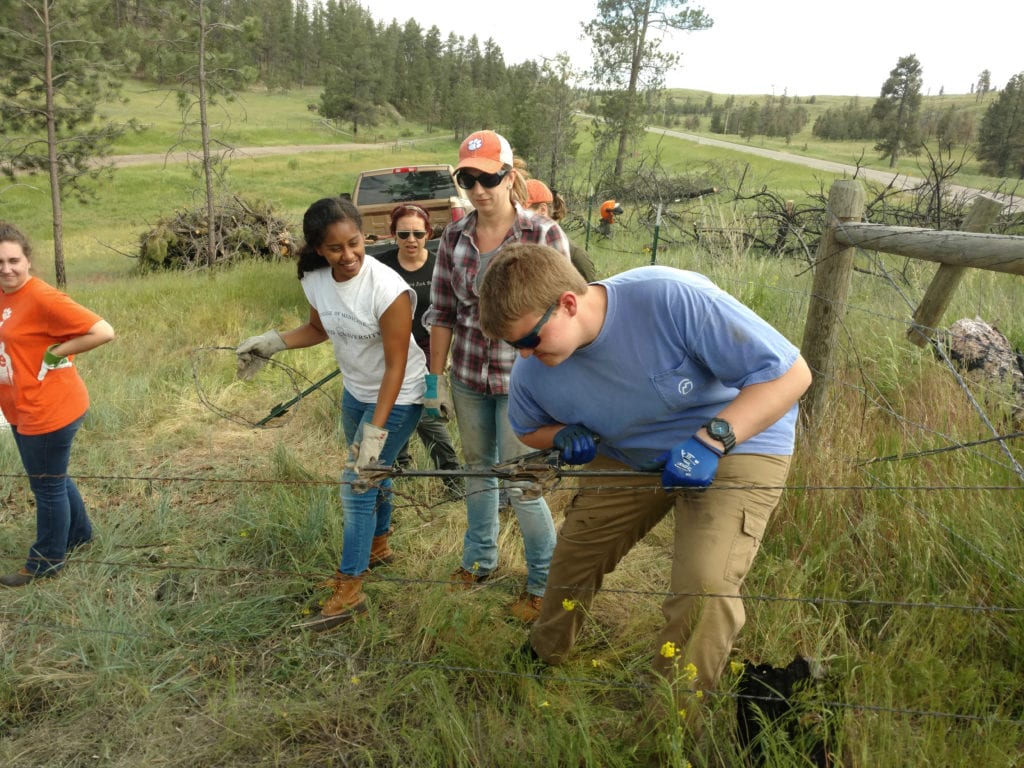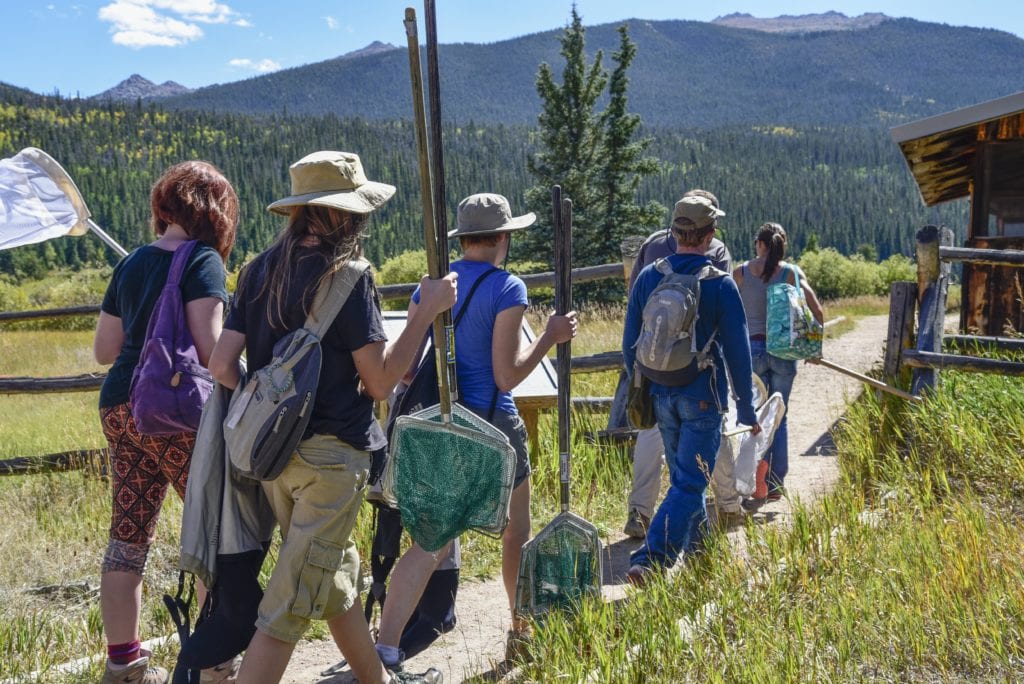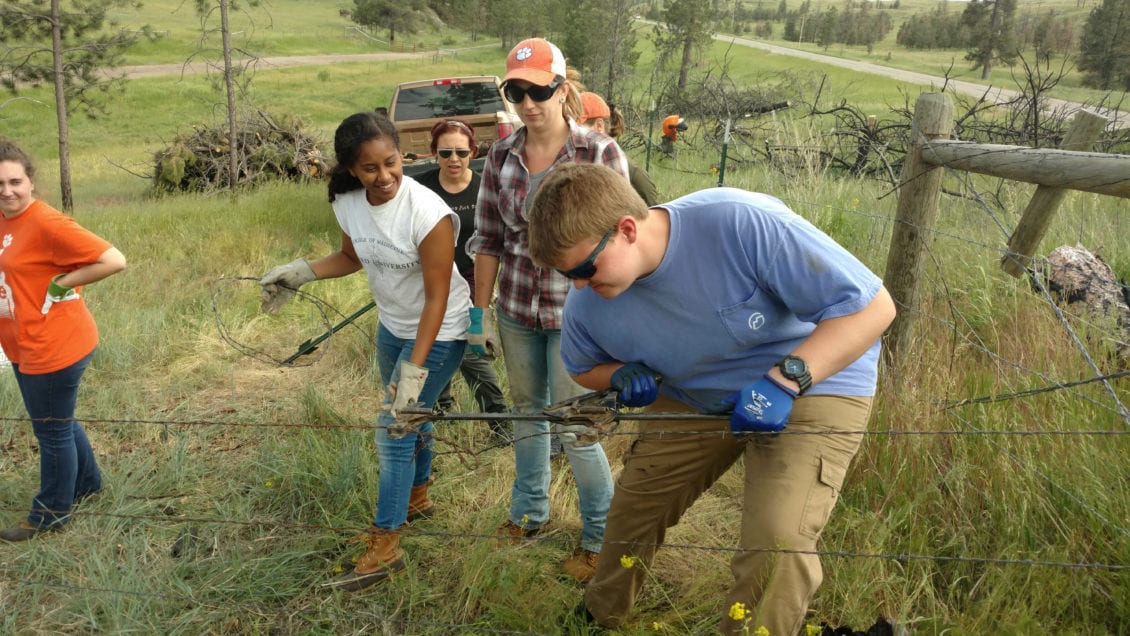A nationwide study spearheaded by Clemson University graduate students showed that low pay and other challenges in gaining field experience directly contributes to a lack of diversity in the environmental and natural resources workforce.
Appearing in BioScience, the paper confirms that low pay is impacting the ability of minority students to obtain internships and therefore gain the field experience necessary to secure careers in a profession vital to conserving natural resources.
“This paper is hitting home to a lot of people for a couple of reasons,” said Associate Professor of Wildlife Ecology David Jachowski of Clemson’s Forestry and Environmental Conservation Department. “The big issue is that typically demand is greater than supply for these types of positions. So, for right or wrong reasons, employers can advertise positions that pay really low and get students to do it, and basically there’s this funneling of things: students who can afford to do this, do it, they get the experience so they’re more competitive for jobs later.”

A lack of access to field experiences due to the low pay is perpetuating a lack of diversity in the environmental and natural resources (ENR) workforce, and the graduate students in Jachowski’s lab led a nationwide survey to highlight this issue in hopes of bringing about change.
Wildlife and Fisheries Biology graduate research assistant Alex Jensen said students need hands-on experience as undergraduates and as recent graduates in most any field, but he and his co-authors recognized a particular disparity in ENR fields in the number of unpaid or underpaid internships.
“There have been several previous articles on the pay in our field, but we wanted to quantify that and find some data,” Jensen said. “So, that’s what we did: sent a survey nationwide, contacted a bunch of administrators and universities across the U.S. in environmental and natural resources, and asked students, ‘How much would you need to be paid for a three-month internship?’”
The survey also posed supplementary questions about what factors affected their decisions when applying for internships, such as whether pay was the primary factor or other things were important, such as skills training or the study species and location.
“Is it pay? Is it the skills you would receive? Is it the study species and location? One of the important things we also did was quantify how much jobs were paying, as well,” Jensen said. “So, we wanted to know if this is actually a problem.”
The study suggests that attracting most students, especially students of color, will require pay above minimum wage, flexibility in timing and study locations, and intentional actions to cultivate inclusive and supportive work environments.
The results showed 27% of jobs in the field paid below minimum wage. It also a strong effect from race, ethnicity and gender; racial and ethnic minorities needed to be paid more than white students, and cisgender female and non-cisgender students needed to be paid less than male students. The authors believe this finding results from a long history of pay inequity impacting pay expectations for women and non-binary groups.

Students across all demographic groups overwhelmingly indicated that they needed better pay to participate in field experiences. On average, respondents required at least $8.68/hour to accept a field position, which is above current federal minimum wage of $7.25/hour. Pay was especially important for racial and ethnic minority students, who required 24% higher pay ($10.80/hour) than white students ($8.21/hour).
The undergraduate years are a critical time for the recruitment and retention of underrepresented students in ENR. Previous research shows that only 40% of the students who begin college with an interest in STEM finish with a STEM degree, but that number falls to 20% for underrepresented minorities.
“That was a major takeaway that aligns with what people have been saying for a while that there’s this racial wealth gap in America, and one way we can help bridge that is by paying everybody more for these temporary positions,” Jensen said.
The survey also indicated that students heavily valued skills training. In fact, overall, it ranked higher than salary in terms of importance to students in selecting an internship.
“People are starting to think about how they pay interns, and our study shows that we could, in time, increase diversity in our field,” Jachowski said.
For its part, Clemson’s College of Agriculture, Forestry and Life Sciences — home to the Department of Forestry and Environmental Conservation (FEC) — has a renewed focus on recruiting underrepresented minorities. The College’s ten-year strategic plan lists “creating a more inclusive and diverse college community” as one of its top priorities.
FEC Department Chair Todd Petty, upon taking over the role in 2020, said a significant part of the leadership he hoped to provide is in diversity and inclusivity in a field that has a history of low diversity.
“It’s my vision for our department to lead in that conversation and in that action,” Petty said.
Sara Petrita Bombaci, now an Assistant Professor in the Department of Fish, Wildlife, and Conservation Biology at Colorado State University, co-led the paper during her time at Clemson.

Bombaci has been tracking responses to the paper online and on social media and said the response has been overwhelming. The paper is currently in the top 5% of all research outputs ever tracked by Altmetric and scored higher than 99% of all papers published in BioScience according to Altmetric.
She also noted that simply one tweet from her own private Twitter account generated nearly 1,000 likes and over 450 retweets. Many of the responses carried a similar theme:
“It’s really cool to see someone put numbers to this issue. If the field tech job market is acting as a wealth-based filter on who can continue to participate, then all the classroom-based pushes for diversity in the world won’t fully solve the underlying issues,” one user commented.
“Very important and interesting research on how to make field experiences in the environmental sciences more inclusive, to attract and retain diverse students,” another replied.
Bombaci said, from her perspective, the most exciting part is the paper is already being used to advocate for transformative and equitable change in field experiences.
“Several followers on Twitter replied that they cited the paper in response to leadership compensation decisions, to improve the quality of their field courses, to push back against a culture of volunteerism in their institutions, to advocate for equity statement requirements from funders, and to include adequate salary in their grant budget justifications,” she said.
“I also have a personal motivation for this work,” she added. “I worked in banking to pay my way through my undergraduate degree and was desperate for field experience, but I could not afford to take underpaid or unpaid jobs. I eventually landed paid field work after college and did a volunteer research project to get the experience I needed, but it delayed my entry into graduate school.’
The full text of the paper is available here.
A blog article written on the topic by Bombaci and Jensen is available here.
Get in touch and we will connect you with the author or another expert.
Or email us at news@clemson.edu

